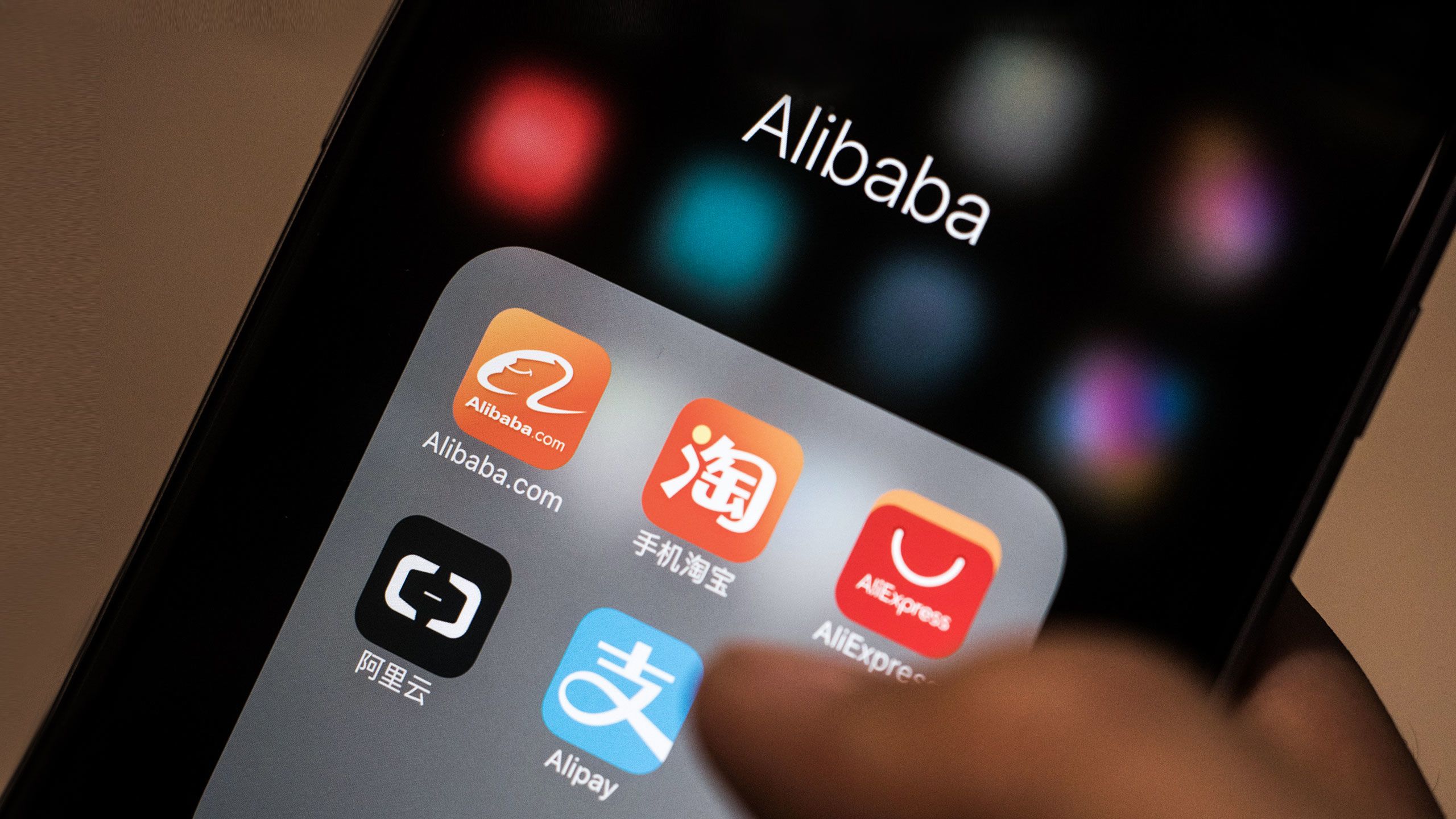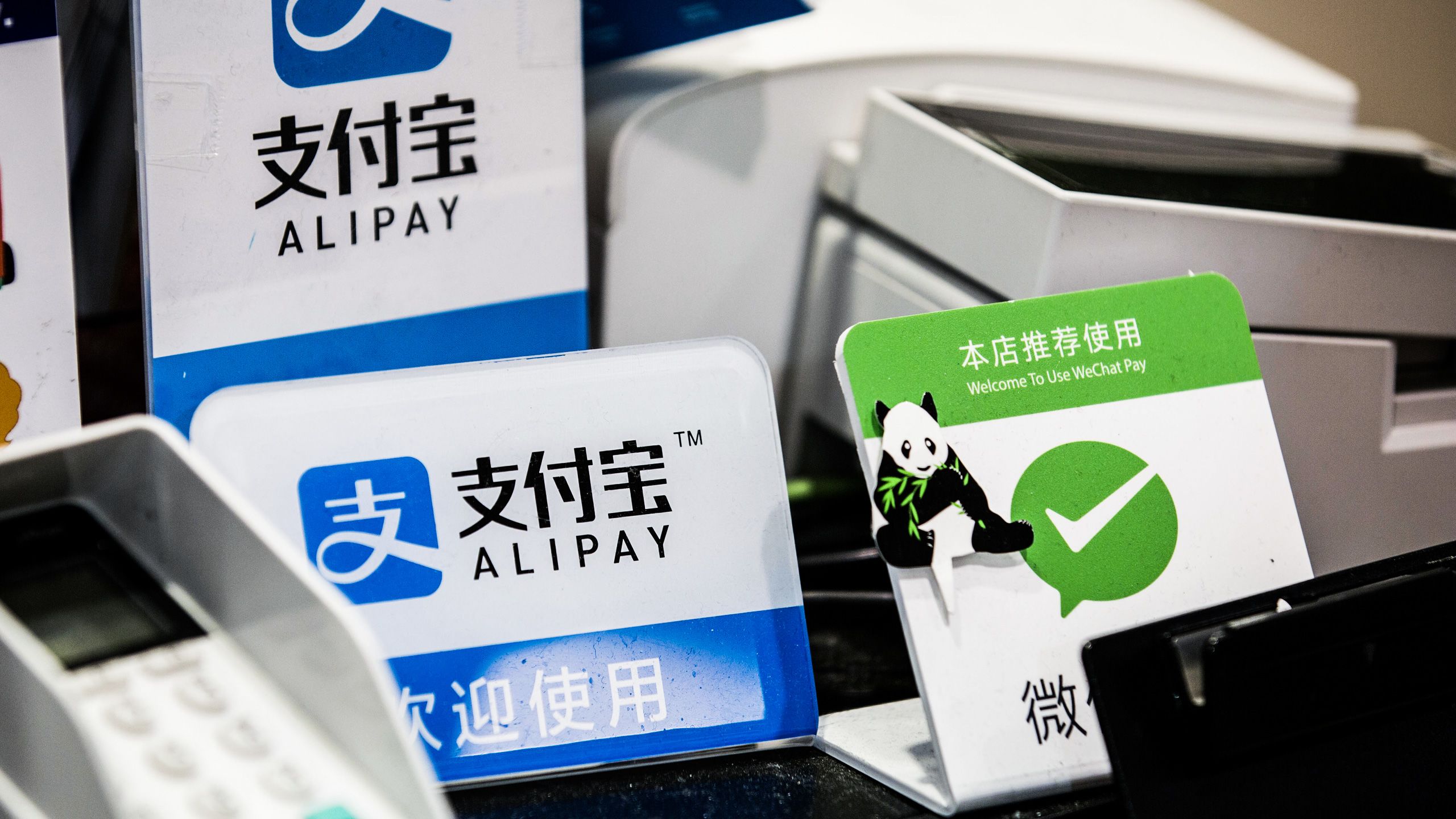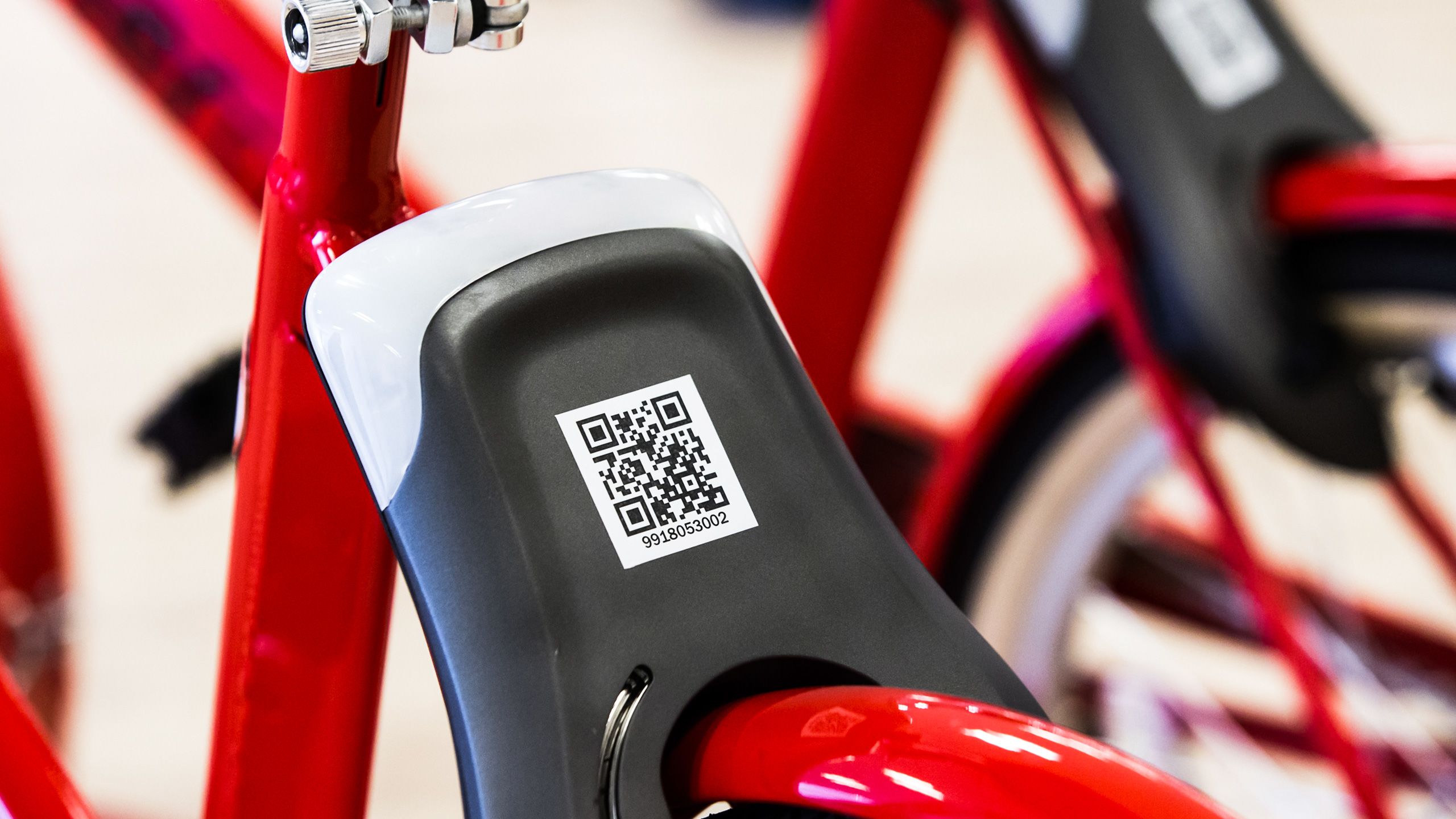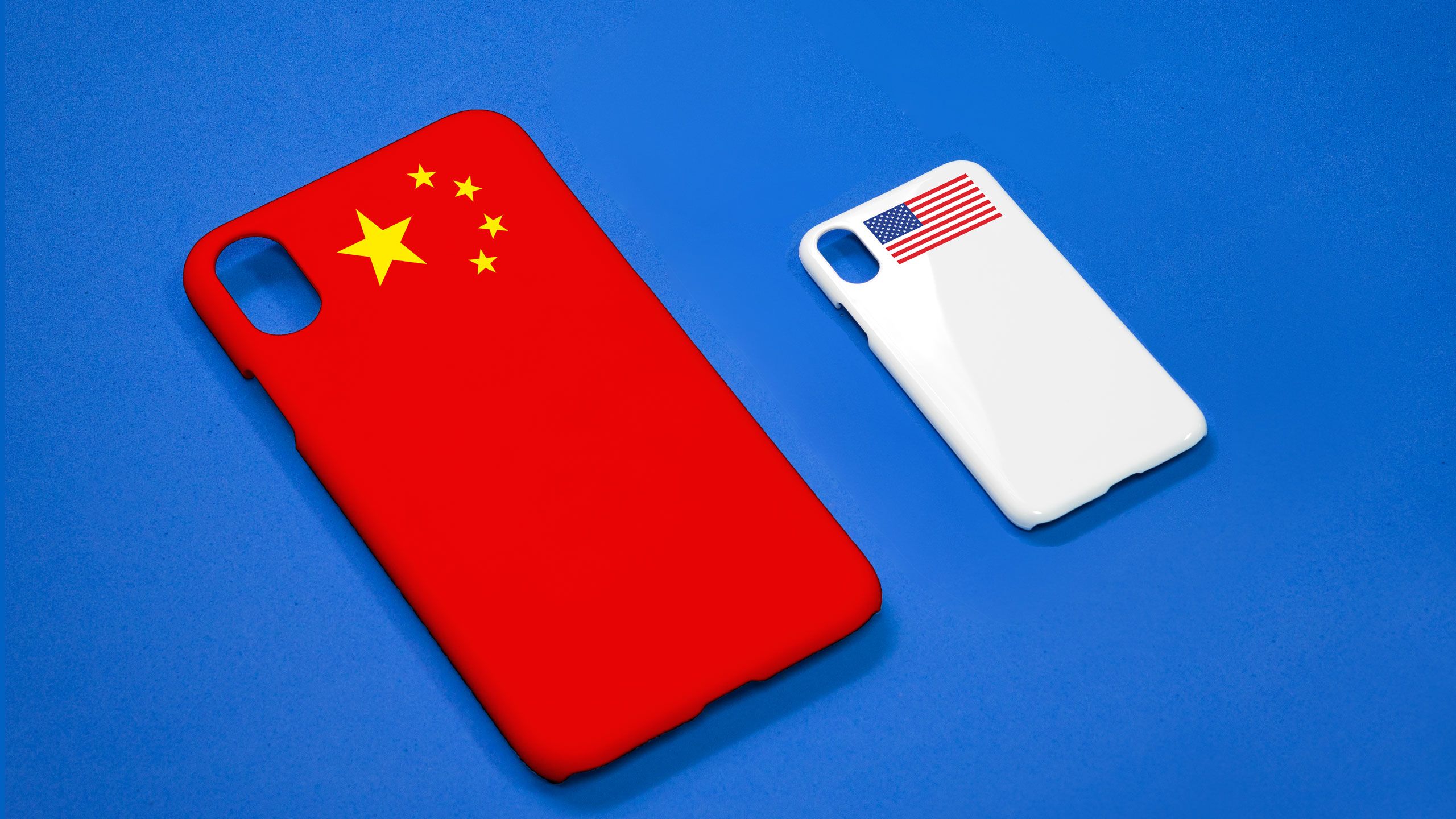

There is no disputing that China is ahead of the rest of the world in mobile payments. What insight does it offer U.S. bankers?
By John Engen
When Darren Buckley moved to China last August to be the head of Citigroup’s consumer bank there, he did what most people do when they arrive in a new country: head for an ATM to grab some local currency.
Nine months later, that stash of renminbi sits in his briefcase untouched, a relic of the past in a country where the majority of payments are now made with smartphones.
“Even the smallest merchants on the street, they don’t want cash,” said Buckley, who came to Shanghai after six years at the helm of Citi’s Thailand operations. “You pay for everything with your phone and a QR code."
“If you’re a banker in the United States, trying to envision what consumer banking could be like, this is pretty close to the end state,” Buckley added. “The level of convenience, 24/7, is well beyond what you can deliver through a traditional banking model.”
Only five years ago, paying for things by phone was a novelty in this nation of 1.4 billion. Today, it’s embraced with a fervor that has radically transformed how money moves in the world’s second-largest economy.
According to the research firm eMarketer, 76% of Chinese smartphone users made a mobile point-of-sale purchase in 2017, compared with 25% of American users. In total, 61.8% of all such transactions globally are Chinese.
In the first 10 months of last year, China processed a whopping $12.8 trillion in mobile payments, according to the state-run news agency, Xinhua — 38% higher than for all of 2016.
Though it's not exactly an apples-to-apples comparison, the U.S. market in 2017 had just $49.3 billion in mobile point-of-sale transactions, according to Shelleen Shum, eMarketer’s forecasting director.
“China has leapfrogged checks and cards … and gone straight from cash to mobile,” said Neil Shah, a research director at Counterpoint Research in Mumbai. “The growth has been fast, it’s been huge, and they’re really just scratching the surface.”
There is no disputing that China is ahead of the rest of the world in mobile payments. Whether it represents a vision of America’s payments future — signaling a disintermediation threat to banks — or is more of a cultural curiosity remains to be seen.
Either way, China’s mobile payments revolution offers lessons for bankers elsewhere looking to keep pace in a world filled with smartphones and third-party “ecosystems” eager to encroach on traditional bank space.
While it’s tempting to dismiss what’s happening in the Middle Kingdom as being mostly about an underdeveloped nation playing catch-up, China is a budding economic rival, and this particular style of payments is spreading rapidly across the globe.
“What we see with China is that the evolution of payments is not going to be a linear extension of what we’ve seen in the past, where countries move up the curve and adopt our card-based system,” said Thad Peterson, a senior analyst with Aite Group in Boston.
It won’t be long before Chinese-style mobile payments surpass cards in popularity in other countries, he said. In an interconnected world, “bankers in the U.S. need to start thinking about the impact of another payments process that could disrupt their business models and affect their customers.”

Start with an oligopoly
More than 90% of Chinese mobile payments run through Alipay and WeChat Pay, rival platforms backed by China’s two largest internet conglomerates — Alibaba, essentially the Amazon of China, and Tencent Holdings, owner of WeChat, the nation’s must-have messaging and social-media app with more than 1 billion users.
It’s as if Amazon and Facebook were the major conduits for payments. (China UnionPay, the nation’s dominant card network, is a distant third in mobile market share.)
The two services have flourished by making mobile payments cheap and easy to use. They benefit enormously from their association with WeChat and Alibaba, which have blossomed into full-blown digital “ecosystems” — always-on hubs for managing the minutiae of daily life.
A key feature of the ecosystems is the “app-within-an-app” concept. WeChat users can schedule doctor appointments, order food, hail rides and much more, all through "mini-apps" that reside on the core app. It’s not necessary to install or sign onto separate apps for each function.
Alipay, which touts itself as a “global lifestyle super-app,” has similar functionality.
Mobile payments work in much the same way, greasing the skids of commerce within those ecosystems while also providing fee revenue for Alipay’s parent, Ant Financial, and for WeChat.
Consumers can pay for everything — a cup of tea, train tickets, even tax and utility bills — with their mobile apps. They also can make person-to-person payments; every individual has a QR code of his or her own, and transfers are free.
“The model in China is exactly the opposite of what it is in the U.S.,” said Drew Luca, co-head of PwC’s U.S. payments practice. “They started with a social platform and moved to becoming a payments facilitator. In the U.S., it’s been financial services first, with social and loyalty on the other end.”

Securing merchant buy-in
The fast growth and meshing of payments with ecosystems has made China a lab of sorts for banks eager to understand the threats and opportunities of a world dominated by mobile payments.
Citi’s consumer banking team in New York, which has long had a “mobile-first” strategy, is studying Chinese usage patterns, behaviors and analytic data in anticipation of similar ecosystems emerging in other markets.
“While WeChat, at its core, is very specific to the local market, we think we’re going to be seeing more customers spending time in these kinds of ecosystems,” said Gavin Michael, head of technology for Citi’s global consumer bank.
He’s been particularly interested in the linkages between loyalty and payments, and how customers spend their time on the app. “Our challenge is to understand and integrate financial services into them,” he said.
With Alipay and WeChat Pay, users don’t need to sign into a stand-alone bank or payments app when transacting. Instead, they simply press the “pay” button on the ecosystem’s main app and a QR code, unique to the individual and linked to his or her mobile wallet, appears for the merchant to scan.
A growing number of retailers, including McDonald's and Starbucks, have self-scanning devices near the cash register to read QR codes. The process takes seconds, moving customers along so quickly that anyone using cash gets eye-rolls for slowing things down.
Merchants that lack a point-of-sale device can simply post a piece of paper with their QR code near the register for customers to point their phones’ cameras at and execute payments in reverse.
A system built on QR codes might not be as secure as the near-field communication technology used by ApplePay and other apps in the U.S. market. But it’s cheaper for merchants, who don’t have to buy a piece of technology to accept a payment.
“One of the big keys driving adoption is that there’s a no-cost way to get merchants on-boarded,” said Shiv Putcha, principal analyst with Mandala Insights, another Mumbai research firm. “They can just print a QR code and stick it on the counter. It’s easy.”
So easy, it’s quickly become part of daily life. In Hangzhou, Alibaba’s headquarters city, an estimated 90% of all consumer transactions are mobile.
Usage is approaching those levels in Shanghai and other big cities. James Chang, a Beijing-based financial services leader with PwC, pays for everything from coffee to haircuts with his phone. “I almost never bring my credit card with me, and have no need for cash,” he said. “It’s becoming a truly mobile, cashless society.”
Walk the bustling streets and alleys of Shenzhen, a large southern technology hub, and merchant QR codes are ubiquitous — posted on food stalls, fruit stands, convenience stores, gas stations and more.
And there’s still plenty of room for growth. In Kunming, a fast-growing southwestern city, QR codes aren’t yet as omnipresent as they are in the coastal cities. But a growing number of storefronts have the codes, and individuals — especially the younger ones — are embracing them.
Suzie Lu, a 20-year-old student at Yunnan University, said she started using WeChat Pay last year, and is hoping Kunming turns into full-out QR-code territory quickly.
“It makes things so easy,” Lu said as she pointed her iPhone’s camera at a rental bike’s QR code to unlock it. When Lu is done, she will repeat the process and leave the locked bike waiting on a sidewalk for the next renter to pick up. “It’s much better than carrying [cash].”

The power of the platform
It’s a stimulating environment for bankers with the technology chops and resources to participate. Buckley said that working with the ecosystems has been good for business, generating new customers and allowing Citi to cut its branch count to about 25 from 45 a few years ago.
“Our path to growth here is acknowledging that we can’t do everything ourselves,” he said. “It’s a massive market, and we have the opportunity to work with partners that have developed more advanced technology and data skills.”
As one of only four foreign banks — and the only U.S. one — with a retail banking license, Citi links customers’ credit cards to both services’ wallets.
It also has its own mini-app on WeChat Pay’s platform that contains 80% of the features of its proprietary CitiPay app and, among other things, can make pitches for wealth management products and short-term loans.
“Almost 90% of our new customers sign up and activate their cards through WeChat,” Buckley said, “and about 97% of our active card base is digitally engaged with us because we’re connected to the ecosystem they like to use.”
Other banks have a similar perspective. Alipay has signed up about 200 Chinese banks as partners for the chance to be part of what Souheil Badran, president of Alipay-Americas, calls customers’ “mobile lifestyle.”
“They love it, because we have the ability to create trust and loyalty,” he said.
But some bankers worry that they’re slowly being driven out of business by the services. “We are losing money and, worse, customers,” a Chinese banker complained in a story in Hong Kong’s South China Morning Post. “Alipay and WeChat have become a duopoly that is impossible to fight.”
With the ecosystems, banks often are reduced to so-called “dumb pipes” — silent funders whose accounts are used to top up customers’ digital wallets.
A requirement that the wallets be linked to a bank account or card means more customers and deeper involvement in their social lives.
But the bank also bears the compliance and other account-related expenses, and doesn’t get the fees or branding opportunities typical of cards or other bank-run solutions.
“The bank is seen as a place where you deposit money and link it to WeChat or Alipay. The trust is aligned more with the platform than the bank,” Shah said. “Banks have to worry, because they don’t own the customer relationship. They’re being disintermediated.”
Significantly, the setup also limits the transaction data banks get to help sell other products and services, such as wealth management, insurance or even loans.
“Banks need to be aware that there’s a different model spreading,” said Dana Nino, an executive vice president at Geoswift, a Hong Kong payments firm. “In China, it’s the platform that gets the direct data from purchases, not the bank.”
Until recently, Chinese banking authorities haven’t interfered much with the services’ strategies or growth. In June, a new government-run clearinghouse is expected to come online to better track payments.
That could provide banks with greater insight on customer behavior, Peterson said. But WeChat Pay and Alipay get that information too, and are using their central positions to offer high-rate money-market accounts, investment advice and short-term loans, among other financial services.
Last year, Alipay-affiliated Yu’e Bao (the name means “leftover treasures”) surpassed JPMorgan Chase’s government market fund as the world’s largest money-market fund, with more than $200 billion in assets.
“The speed of migration to their wealth-management and money-market funds has been tremendous,” PwC’s Chang said. “That’s bad news for traditional banks, where deposits are the foundation of the business.”

Importing the model
China’s mobile payments movement dates back to 2004 when Alipay was launched as a trusted middleman for sales on Alibaba’s popular Taobao e-commerce websites. It evolved into the must-have wallet to buy things on Alibaba’s sites.
When the smartphone arrived on the scene five years ago, the service migrated to mobile, and WeChat jumped in. That set off a heated competition between the two services.
In 2014, WeChat Pay created a sensation with a promotion tied to the Lunar New Year tradition of giving family, friends and acquaintances red envelopes, or "hongbao," with small amounts of money. WeChat Pay users sent more than 20 million gifts in two days, and the service gained 5 million new wallet accounts.
Since then, the popularity of digital red envelopes has increased exponentially. During this February’s celebration, punctuated by a star-studded extravaganza on national television, an incredible 768 million Chinese sent digital gifts via WeChat Pay.
Alipay sponsors Singles Day, a November sales event on Alibaba’s platforms that generates more sales than Black Friday and Cyber Monday combined. In 2017, Alipay processed more than 1.5 billion transactions on one day.
The two are constantly jostling for position. When Alipay declared the first week of last August “cashless week,” WeChat came back with its own “cashless month.” Both firms offered rebates and cash prizes for using their services.
In September, Alipay broke WeChat Pay’s monopoly in China’s 2,800 Starbucks locations; two months later, WeChat Pay was granted the ability to process ticket payments on the nation’s massive rail system, formerly Alipay’s exclusive turf.
Increasingly, they’re taking the battle outside of China — including the States. Yet for all the action and eye-popping numbers, analysts say most U.S. bankers are unaware of the ecosystems’ meteoric rise, let alone their encroachment onto banker turf or expansion plans.
To be sure, there are significant differences between the markets. Cards are common in China, but not widely used. Until recently, cash was king. Counterfeiting was rampant and a thriving black-market economy frustrated government efforts to collect taxes and track money.
“There was no real retail payments network to disrupt,” Chang said. “When the smartphone came, it created an opportunity.”
Americans are more guarded about privacy than the Chinese, and the technology standards — the mobile platform and the reliance on QR codes over more-secure NFC technology used in the States — are different.
More fundamentally, Americans don’t perceive mobile payments as superior to a card-based system that works well — and provides lots of points and miles.
“U.S. consumers don’t consider paying with a phone to be more convenient or faster than a card,” Shum said. “There’s no sense of urgency, like there was in China, to make a change … no problem to fix.”
That doesn’t mean bankers can ignore the trend. WeChat Pay and Alipay are both already operating in the States — efforts that, for now, target Chinese tourists in Las Vegas casinos or New York’s Chinatown.
“Chinese people are habituated to using Alipay, and these merchants want to offer the same opportunities” in the States, said Nandan Sheth, a senior vice president with payments processor First Data Corp., which is working with Alipay.
Officials say they have no designs on the U.S. consumer, and Washington would likely balk over concerns about the Chinese government having access to American citizens’ data.
Even so, Sheth said he’s gotten the sense that WeChat Pay and Alipay hope to target U.S. consumers in the future. Others expect they could find success.
“As soon as it is readily available in the U.S. for sending money, it will likely gain quick popularity,” Nino predicted.
Homegrown firms, including Facebook, Amazon and PayPal, also are attempting to embrace ecosystem strategies, though success on China’s scale would be tough to duplicate. Regulators would take a heavier hand, and the U.S. market isn’t “mobile-first” like China, Putcha said.
Peterson said the good news for banks is that such efforts would likely be card-based — extensions of an Amazon Prime account, for example — which could boost bank interchange revenue.
Facebook in April announced plans to enhance privacy safeguards, foreshadowing a potential move to work more closely with banks.
The bad news is that ecosystems are by their nature dynamic, and the funding mechanisms could change with time. “If you have a large base of customers using a wallet, they’ll find a cheaper way to top it off that doesn’t include credit or debit,” Sheth warned.
That should create a sense of urgency for bankers to find their own mobile payments solution — perhaps something akin to Zelle, the industry-run P2P offering.
“To protect their business, banks need to put together a viable mobile payments platform of their own that is ubiquitous to all banks and is easy for merchants to adopt,” Sheth said.
Individually, banks should monitor the space’s evolution and think through how, or if, they might participate.
“You want to have a thorough understanding of how each of these new wallets work with relation to pricing, data sharing and consumer trends so you can map out a strategy” for dealing with the services, Nino said.
Even if mobile payments continue to languish domestically, banks might need to understand how ecosystems elsewhere work. “Cross-border commerce is usually more important to your merchant clients than you think it is,” Peterson said. “You need to be able to support those customers or they’ll go to someone who can.”
For now, China’s mobile payments explosion and the ecosystems behind it might represent more of an educational freak show than any kind of opportunity or threat for U.S. banks. But as a banker who lives with China’s ecosystems, Buckley says it’s only a matter of time before the model influences payments in the States. His advice is simple: “Don’t fight it. Don’t resist it. Embrace it and learn it."
“You need to become forward-compatible,” Buckley said. “Otherwise you will be disintermediated.”






